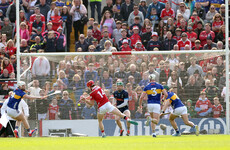REACHING YOUR HEALTH and fitness goals is hard enough as it is, never mind when you aren’t going about it the right way.
But what is a good approach?
Over the past three weeks I’ve created a number of videos to help you out with a couple of movements that are common in gym programmes.
These drills are basic and uncomplicated, yet a lot of the time I see these movements performed incorrectly, largely due to two reasons:
1. You haven’t been taught correctly.
OR
2. You didn’t dial the basics in for long enough and moved on to the more complex stuff straight away.
However, believe it or not, less is more most of the time with these exercises, which are the ones that will give you the biggest bang for your buck.
These exercises will help you build a solid foundation from which you can build once you get consistent and stronger at these movements.
Basic squats, push-ups and pull-ups are things you should be looking to work towards getting right initially.
Other areas like basic flexibility/mobility standards are also very important. Being able to touch your toes while in a seated floor position, perform a basic couch or pigeon stretch, or complete shoulder dislocates correctly are all important standards I like to see clients meet.
Time and time again, I see people doing movements without spending enough time working on basic technique. Over time, this is going to lead to a risk of injury or burnout.
Sometimes you need to stop rating how good your workout has been by how sore you are the next day or by how much you sweated off.
What you need to do is spend more time working on your mobility, find out what areas you need to improve, build some strength and every now and then get your heart-rate up.
These two steps should get you on track:
1. Get a mobility screening done and find out what areas of your body need attention before bringing in increased movement, load and intensity. You could find you have tight hamstrings, tight and inactive glutes, a stiff lower back, or even tight ankles. Any good trainer should do this in the early stages.
2. Learn the basic movements to build a good foundation, focusing on your strength, mechanics (or technique) and consistency. Then you can increase the intensity. It’s important to work on basic bodyweight movements so that you learn the best technique and scale/level you should be working on before progressing.
Below is a selection of videos covering advice on warm-ups, squats, push-ups, pull-ups and kettlebells.
Warm-up advice
What your squat should look like starting off
How to get better at push-ups
How to scale your pull-up for your level
Kettlebell swings
I hope you find this information useful and if you need any more advice just pop me a message. You can see more advice from me on my social media pages, which are linked below.
David Last is a personal trainer based in Dublin. For more information you can follow him on Facebook, Instagram and Twitter. Or you can send me a direct message here.











Ah another disappointing move for a promising u21 player…. I don’t know a lot about second division Swiss football, but it doesn’t sound like a great level….
@Augustus hoop: football isn’t just confined to England. Fair play to him going for more unorthodox move, Conor looks very promising so hopefully gets hes break and has a good future. Grasshoppers are a relatively big club too
@Denis Cremin: swiss football is muck so he has a very good shot at making a real go of it. The wages are excellent though and all the good players get snapped up by german clubs. The league itself was historically a retirement home for german players looking for a last low tax payday but they started to focus alot more on younger players so the standard gradually dropped. Zürich itself is little more than a town with two football clubs who are far off being world beaters. FcZ are not that much better than grasshoppers even though they are a division above. The main teams are YB and basel nowadays. Stadiums are great also so in ralaity the only thing second rate is the football
@Denis Cremin: unorthodox doesn’t always mean good, second division Swiss football sounds more like out of sight out of mind, decent player but to progress needs to cut out the loans and get something permanent at a higher/better level than this
@Denis Cremin: my issue isn’t that he is moving away from England – I welcome that – my issue is as I say in the comment, that he is moving to a level that he should be better than based on what I’ve seen – irrespective of how big the club is.
It’s the same as lee O’Connor going to league 2
@Augustus hoop: good experience for him playing abroad, was in Slovakia last season and he did well in the games I could find streams for.
The one player in the u21s that gets me off my seat,
Cracking technical player.